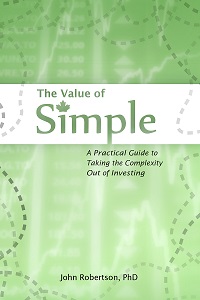Gas Mileage and Winter
November 18th, 2007 by PotatoTracking my gas mileage, there’s a noticeable drop in efficiency when winter comes around. There are a number of things that cause this, and I can’t really do much about a lot of them. Winter gas blends, snow, and decreased temperatures all take their toll. As does my change in habits as the weather cools down: no longer up for long walks down Richmond when I want to eat out, and with the start of curling season, I start taking the car more often for short trips within the city, and short trips can have quite a dismal effect on fuel economy. Winter can make that even worse with more idling required to get the car warmed up and clear…
- Idling: this is a good way to waste fuel, burning it up by not moving. Generally, I try to avoid idling when I can, by doing things like buckling my seatbelt before I start the engine so I can just put the car in gear and drive off, and by shutting the car off when trains are going by and I know I’m not going to be moving. In the winter however, that changes for me as I need to have the car idle for a bit at startup if there’s any fog on the windows. A lot of places say the best way to warm up the car is by driving it, and for what it’s worth, that’s true… but for me, it’s not about the car being warm, it’s about being able to safely see. I won’t be the person recklessly driving around leaned over the wheel squinting through the sliver of clear window at the bottom, so I wait until it clears up, even if it costs me some more in gas/efficiency. Unfortunately, this is one compromise I have to make for winter driving without much recourse. Someone did suggest trying an anti-fog glass cleaner to reduce condensation in the first place, and I’ll have to give that a go.
- Radiator block: similar to the theme of idling, in the winter the car’s engine can often run more than it needs to in order to get up and stay at operating temperature. A block heater can help a bit with this, but isn’t quite so useful for my situation because I don’t really have a set schedule (whereas a daily commuter might be able to better predict their car use and make use of an outdoor timer to run the heater), and because I park in a parking lot out behind the house (and… er… my car doesn’t have a block heater installed). Coincidentally, a block heater can also help ease the starting process. However, another component of winter engine operating temperature is staying at operating temperature. In that case, the openings at the front of the car to let air flow over the radiator are actually too large; the radiator has to have the cooling capacity to keep the engine cool when running full out in the summer heat. So too much cooling takes place in the winter, and some people recommend blocking the radiator openings in the winter, often with pipe insulation. Now, common sense would dictate that one should tie the pipe insulation down in some way, but I figured I’d give it a whirl and see how it worked without that, and lost one segment that was just compression-fit on my first highway drive, so I’m going to have to figure out how to secure it now.
- Tires: One way to improve mileage and extend tire life is to inflate your tires beyond the door jamb value (but still staying safely under the tire’s sidewall pressure). However, while I know that modern tires don’t really lose much traction under higher pressures, I’m hesitant to run too high in the winter. In the summer, I’ve been running 3 PSI over the door jamb (up to 35 PSI in my case) and have been experimenting with 40 PSI (which is the compromise value of my door jamb and maximum sidewall pressures). Of course, under-inflated tires are a safety and efficiency issue as well. Since air contracts at colder temperatures, I’m starting out this year at 37 PSI, and expecting that it will drop to the door jamb value of 32 PSI by the time it gets really cold out. As always, regular monitoring is important! Tire selection can also impact fuel economy, but a set of winter tires (or a good set of all-seasons and a careful driver) is critical in winter, so this is another area where we just have to sort of suck it up and accept that there’s going to be a mileage hit in winter.
- Snow: I get much tireder walking through deep or shifting snow than I do when walking along a cleared road, and I’m pretty sure the same thing happens for a car that has to force its way through the snow (on top of the fact that if the roads are crappy, you’ve got to drive slower to stay safe). Since I have a more flexible schedule in terms of my car use, I can avoid the worst of the road conditions: call up the ‘rents or my friends and say I’m not driving to Toronto in that, give a night of curling a pass (which happens fairly often when there’s late afternoon snow, as London seems to like to wait until the next morning to plow it if it starts after 4 pm or so). As a grad student, I even have the freedom a lot of the time to stay an extra night in Toronto if I get stuck there when the white stuff comes and just work later when I do get back. While avoiding the nasty times can help improve fuel economy, the reason I do it is for safety, and I recommend anyone who has to drive in the winter sort of step back and ask yourself if you really need to be out driving when it’s nasty out.
- Short trips: Short trips are bad for mileage at any time, but especially in the winter when each trip requires the car warm itself up and defog the windows, etc. So one killer for me is of course the bizarre seasonal predisposition towards short trips to the curling club, shopping mall, etc. Really the only way to avoid some of this is to try to combine trips as much as possible. Unfortunately, I didn’t have much success with that last year: trying to go X-mas shopping before curling put too much pressure on an already stressful time, because I had to be out of there at a very specific time, and of course nearly everything is closed afterwards. Going grocery shopping works a fair bit better right after curling, but that was about the only trip combination I was able to work out. Hopefully this will be a more helpful tip for my constant readers.
- Slowing the hell down: a good year-round tip, slowing the hell down is doubly effective in the winter because it’s also the basic premise of safer winter driving.


 Questrade: use QPass 356624159378948
Questrade: use QPass 356624159378948 Passiv is a tool that can connect to your Questrade account and make it easier to track and rebalance your portfolio, including the ability to make one-click trades.
Passiv is a tool that can connect to your Questrade account and make it easier to track and rebalance your portfolio, including the ability to make one-click trades.